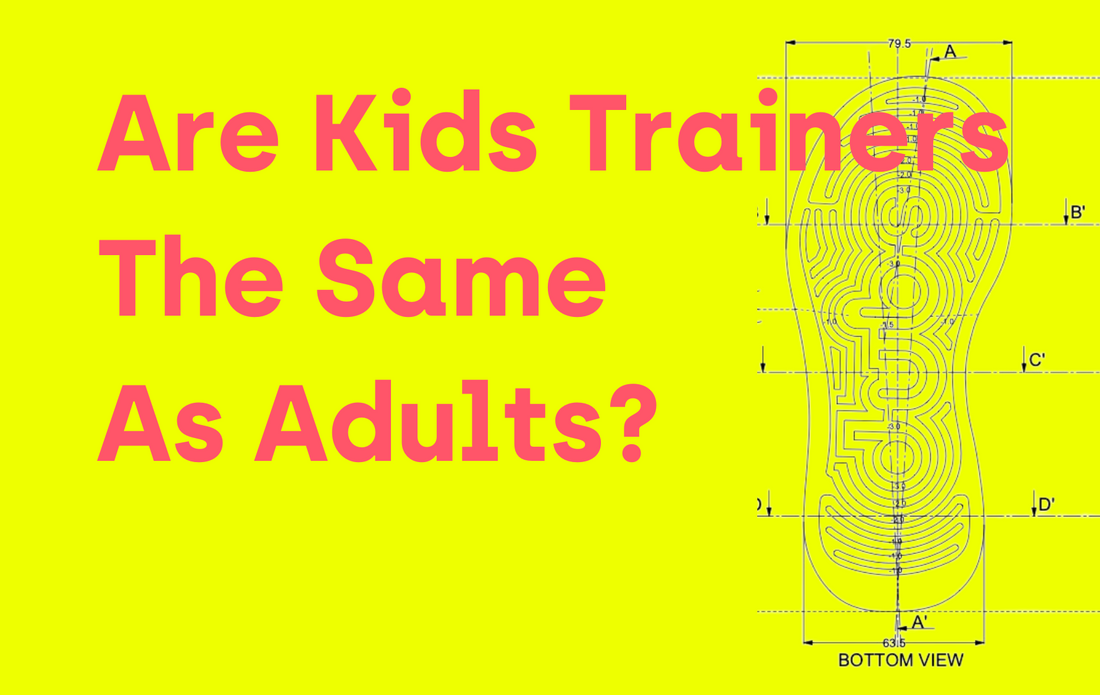NO!
Nope, nadda, not at all.
Not. At. All.
And any brand that tells you otherwise, avoid avoid avoid.
Kids' feet are special - they are still growing. In fact, they don't really have bones in their feet. Well, at least, not bones as we know them. They are essentially a bag of soft spongy cartilage. So soft that they can be “pushed out of alignment” by poorly fitted shoes. Sounds rank, doesn't it? But I’m trying to paint a picture of how soft and delicate kids' feet are and explain why we need to protect them.
When babies are born, their feet are mostly cartilage, which gradually hardens into bones by around the age of 13. Considering the foot makes up about 25% of the bones in your body, that's a lot of bones to protect.
Moreover, when you consider the continuous movement of little feet, the stress exerted on these delicate bags of cartilage (Okay, I’ll stop saying that now!) is even more than that experienced by adults. This underscores the critical importance of ensuring that the shoes we stick on their feet are purposefully designed and properly fitting.
As you think about this, bear in mind this shocking stat; experts estimate that 70% of adults suffer from foot health problems and that most of these problems are the result of wearing ill-fitting shoes in childhood.
Having too much room may require them to grip tightly to keep the shoe on, whereas insufficient space can result in their pliable toes getting squashed. Growing feet need just the right amount of space at the end of their shoes so they have room to grow comfortably. Flexibility is crucial, allowing the sole to mould to the foot, and utilising soft, supple materials such as leather, suede, canvas…. recycled plastic bottles 👊 enhances the overall comfort and support.
And the damn nerve endings in kids feet also take time to develop, so your child may not be able to let you know if their feet are sore or squashed by shoes 🤦🏻♂️..making regular checks on fit essential.
If you are reading this and thinking it’s all a little bit overwhelming, I agree. It’s hard enough being a parent as it is - the school emails, the class WhatsApp (500 messages a day!?), the general day to day admin that comes with being a parent, the last thing you need to do is more research, more ‘if you don't do this, your kid will get elephant's foot’.
I've been there - before my Dubs journey, I didn't fully grasp the importance of kids' shoes.
I love trainers - and as soon as Leila, my daughter and chief Dubs wear-tester rocked up, I couldn’t wait to get her a pair of my favourite brand of sneaks. But I wasn't aware that Leila had wide feet.
We had her feet measured for school shoes (I mean that was an experience too… 👶 ➡👿) but with trainers, I just bought the same size. Turns out the trainers I bought were super narrow and her little toenail got squashed and deformed. She didn't moan once, I did the usual tests, squeezed the sides, squeezed the toe, all felt like there was room and off we went to the pub. Thankfully she is fine now, but my flippant attitude towards this was quite shocking.
When we started Dubs, one thing we were adamant about was not compromising on fit. We invested time and money to develop shoes exclusively designed for children's feet.
We didn't simply shrink down adult sizes - like many high street brands. We could have, and it would have been a lot cheaper. We could have bought “off-the-shelf” soles that would have cost us $2 but we just couldn’t. Kids foot health is just too damn important. Working with the best kids’ footwear technicians, we meticulously graded and fitted each sole for each size, so that they had the growing room, flexibility and support for growing, supple, energetic little feet.
There are lots of great options these days in terms of what type of shoe is best? Barefoot shoes for adults are really capturing the imagine of foot caring shoppers.
And we have seen this trend move into kids’ footwear. Awesome brands such as BeGreater are leading the charge in kids’ barefoot shoes.
I’m no barefoot expert, so it would be remiss of me to give any thought on this, but whether you are into the barefoot vibe or not, what is important is, as a parent, you consider foot health and the ongoing need to buy well fitted kids’ shoes as important.
Whether you're a fan of the barefoot trend or not, putting foot health first and paying attention to fit while purchasing kids' shoes is absolutely essential. Navigating through the vast amount of information available, often filled with conflicting advice; barefoot or not, buy one size up, wide fit, podiatrist-approved—can be challenging. As a dad first and foremost and a kids shoe brand owner second, who occasionally shops other brands too 🤫, this is what I look for, especially if I am buying on Vinted / second hand shoes:
- Avoid buying shoes that are too big, as toes gripping unconsciously can lead to tripping and affect development.
- Ensure they have growing room, with a slightly wider toe box for natural growth - be careful of the ‘fashion toe box’ that is super narrow.
- If possible, choose shoes designed for the specific activity your child will engage in, be it sports, casual wear, or outdoor adventures.
In a nutshell, knowing the difference between kids' shoes and adult shoes isn't just about style or size. It's about taking care of your kids growing feet and ensuring their feet stay healthy. And by choosing brands that put kids' foot health first, parents are setting the stage for a lifetime of comfortable adventures.
